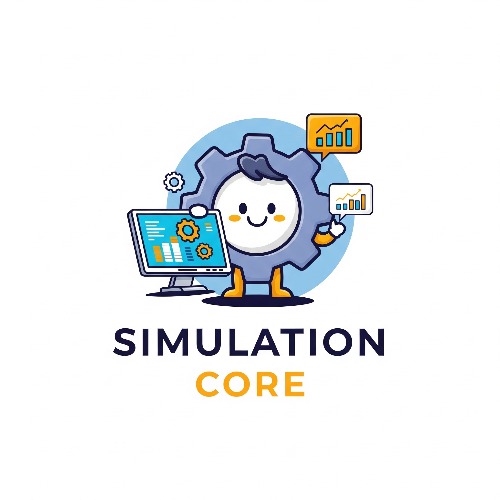[Plant Simulation Tutorial #02] Installation & Launch – Getting Started with Plant Simulation

📑 Summary
This post explains how to install and launch Siemens Tecnomatix Plant Simulation for the first time. It includes key considerations when installing for corporate or educational purposes, and provides a simple introduction to the main UI components you'll encounter upon launching the program.
🔧 Installation Guide
1️⃣ Commercial vs. Educational Versions
- Commercial License Version: For enterprises and institutions with Siemens licenses. Requires a USB dongle or server authentication.
- Educational Version: Available on Siemens’ official website. Offers nearly identical features, but with limitations (e.g., maximum 80 objects).
👉 Plant simulation software | Siemens Software
Plant simulation software | Siemens Software
Use Plant Simulation software for discrete-event simulation and throughput optimization to improve manufacturing performance of your production systems.
plm.sw.siemens.com
2️⃣ System Requirements
- OS: Windows only (Windows 10 or later recommended)
- Framework: .NET Framework 4.8 or higher required
3️⃣ Installation Steps
- Run the installer (setup.exe)
- Choose installation path (default is recommended)
- Select license type
- Commercial: Specify license server or insert dongle
- Educational: Auto-verification
- Once installation is complete, launch the software from the desktop shortcut
💡 Tip: If you are part of a company with a license, contact your internal IT or engineering team to proceed smoothly.
🚀 First Launch – Main Screen Layout
| Class Library | Contains all objects used in simulations (e.g., Source, Drain, MUs) |
| Frame | Main workspace where modeling is performed |
| Inspector | View and edit properties/methods of selected objects |
| Event Controller | Control simulation time and view active events |
| Menu / Toolbar | Basic controls like run, stop, zoom, etc. |
⚙️ Useful Setup Tips
- Change Language: File → Preferences → Language → English
- Enable Grid View: Menu → View tab → Grid
📝 Optional Practice Task
After launching Plant Simulation, try creating a new blank model:
- From the Class Library or Toolbox, drag and drop the following objects into the Frame:
- Source → Station → Drain
- Press F5 (▶) to run the simulation. You should see the material unit (MU) flow through the system.
This simple flow lets you test whether the simulation is working properly.
In the next post, we will dive deeper into how each object functions and how to configure them.
📝 Conclusion
The Plant Simulation interface may seem unfamiliar at first, but taking the time to explore and build simple process flows in the Frame is the best way to learn.
🔜 Next Post Preview
In [Plant Simulation Study #03], we’ll cover the core objects — Source, Drain, and Station — in detail, including their properties and typical use cases.
